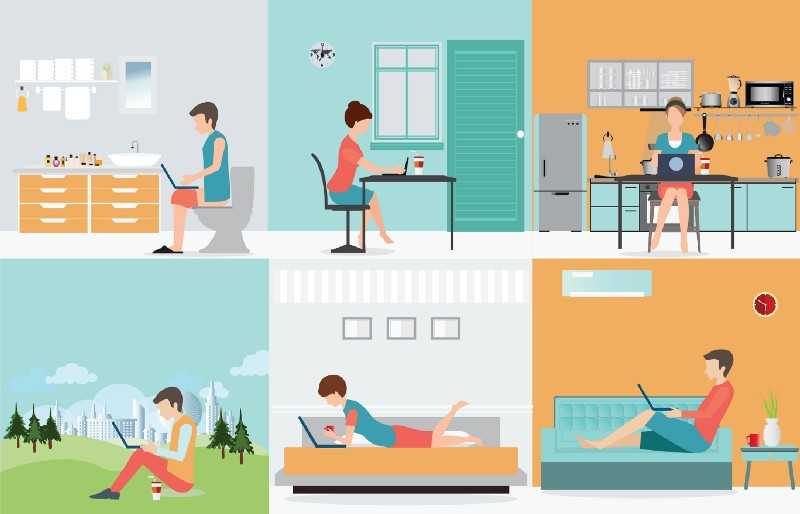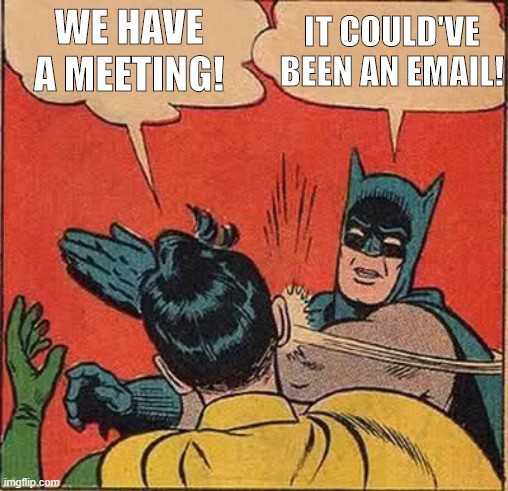Making the most out of calmly carrying on while away from your office or school.
This article was written by Luker, MyCrypto’s project manager extraordinaire. You can follow her on Twitter!
Whether you’re the CEO of a Fortune 500 company or a first-year university student, the topic that’s on everyone’s mind worldwide as we head into Spring of 2020 is the Coronavirus. Governments across the globe are advising people to stay away from large groups, schools are evacuating, and many businesses are opting to have employees work from home (in many cases, for the first time).

We’ve come a long way from the world that was shaken by the Spanish Flu in 1918, so it’s important not to panic while still taking seriously the precautions encouraged by health officials. We need to be safe but must do our best to prevent business (or education) from coming to a grinding halt. We at MyCrypto are sensitive to the fact that not everyone has the luxury of maintaining business as usual without having to venture to their job sites, especially for blue-collar workers in the US. If you think your occupational duties can be met without coming into the office (or whatever location you’re usually required to turn up at) and your boss hasn’t already followed the lead of Twitter, Amazon, Google, and others, it might not hurt to ask them. You might be best served to stress the practicality of this option, as sick people are not going to be as productive or able to perform their job to the best of their abilities, and that hurts the bottom line. If you’re an employer who is reading this, I urge you to seriously weigh your responsibility to ensure the safety of your staff. We’re all humans, after all.
For those of you finding yourself as a work-from-home employee or employer for the first time, MyCrypto wants to share some insights that we’ve learned as a remote team of international contributors.
Timing is Everything
Our company has people in quite a few different countries and we allow everyone to set their own hours as long as the work is getting done. Depending on how dispersed your team is, you might find yourself struggling with varying time zones and schedules. There are lots of websites and apps out there that help align your time zone with others. It’s also helpful to set reminders for yourself to check on things you’re not going to get an answer to for several hours.
Some people thrive in a remote environment. I, for one, hate being interrupted when I’m deeply concentrating on something. I really appreciate being able to finish what I’m doing or finding a natural breaking point every so often to check my messages. If you like to shut out all distractions and hack away at whatever you’re working on, great! But make sure to periodically check in with your team. Set notifications that suit you. Many apps have great tools to help you stay on top of things, so it would behoove you to look into what features might be available for the software your company uses to communicate.

It’s important to know what matters are better hashed out over video conferencing and what can be addressed asynchronously. Don’t hold a meeting for what can be in an email or discussed on a messaging platform.
If too many synchronous calls are held or if they go too long, no one is going to have any time to do their actual work. You may benefit from timeboxing calls and/or designating someone to keep conversations from getting in the weeds. Sometimes issues will need to be worked out between fewer members of the group. In these cases, the smaller groups should “take the conversation offline” so as not to hold the others hostage.
Communication is Key
However, as a remote worker, it’s very important that you maintain adequate communication with your team. If someone asks you a question, answer them. Even if you’re in different time zones and the question was asked hours ago, communication is the key to any relationship. It’s important for people to feel heard. When asynchronous communication breaks down, that’s when you get more meetings taking up your time!

Benefits and Challenges of Working Remotely
I spoke with a few people who have both worked from or attended classes from home as well as in centralized locations, and they have had mixed experiences. Some really love the freedom it allows, while others struggle to maintain productivity. One medical professional in a hospital management position (who wishes to remain anonymous) reflected that they were “more productive because you don’t have everyday foot traffic and distractions when you’re sitting in an office.”
They went on to say they appreciated the web and video conferencing app, and the office management software that allows them to “stay connected to staff without exposing them to danger.”
Even before this most recent outbreak, many medical practices had already turned to online consultations as a way to reach more patients in ways that were more convenient to both parties.
However, one graduate student hasn’t found being separated from their team so easy, and feels that their university’s learning management system (LMS) leaves much to be desired. (This individual also asked to remain anonymous. Hey, privacy is important, people!)
“Coming from someone who has experience with both in-person and online classes, working remotely requires a greater deal of self-discipline than a traditional setting. It caters towards individuals who are intrinsically motivated versus externally motivated.”

While this student appreciated the theoretical ability to work at their own pace, preferring “bursts of energy rather than marathoning,” many of the collaborative classes in their program didn’t allow for this freedom in practice. “Working remotely when being a part of a group is a challenge, to say the least.”
Fortunately for the thousands of college students that are abruptly being evacuated from their dorms and asked not to return from Spring Break (possibly for the rest of the year), most institutions of higher learning already have LMSs in place to facilitate assignments, communication with teachers, digital textbooks, or even quizzes and tests. But, for many, the quality of the system will play a big role in the quality of education they receive.
The student I spoke with lamented, “The majority of my online classes have terribly designed and organized class platforms that impede the synthesizing of information.”
It may be difficult to sway the sprawling bureaucracy of a university or giant corporation to re-evaluate and migrate to a different system, but if you’re at the operations level of a smaller company, it could wind up making all your employees less frustrated and more productive. Last year, MyCrypto migrated its entire project management system to a new tool. It was a freaking headache, but I’m so glad we did!
I’d like to point out one final benefit of having a decentralized team (because those of us in the blockchain space can’t go more than 20 minutes without mentioning decentralization): The minimization of single points of failure. If the power goes out in a centralized office, everyone sits around in the dark or goes home anyway. In a remote environment, if I lose my internet connection, I can jump on our group messenger’s phone app and communicate with my co-workers who are still plugging away.
How to be in a Team From Afar

You may have a preferred method of communication, whether it be text-based, voice only, or by incorporating facial expressions and gestures while on camera. Remember that it’s important to establish yourself as a valuable member of your team. You should be contributing substantial work, noticeably contributing to collaboration in text, and/or shining in video calls. If you’re not doing at least one of these, it will likely be noticed and is a cause for concern. Don’t disappear! Our team has a daily, text-based stand up prompt — in our messaging app to help track what everyone’s up to.
We’ve touched on how some people enjoy the peace and focus that comes with working in isolation, but some people find it lonely. One challenge to having a remote team is building camaraderie. In the absence of a water cooler, MyCrypto has found it helpful to have messaging channels dedicated to sharing music, posting interesting articles about our industry as well as current events, or generally shooting the breeze.
MyCrypto also has one “all hands” video call a week that is less structured, where everyone is encouraged to participate in organic conversation. Sometimes it’s about our products. Sometimes it’s about current events. Sometimes it’s about DIY sauerkraut. But it helps chip away at the challenge of building camaraderie in a remote team.
I’ve had many experiences at jobs with a much more rigid culture, where socializing was completely discouraged. In my experience, this breeds animosity and ends up with people not enjoying going to work. If you are an employer, remember that the people who work for you are human. This is important whether they’re working from home or in an office. Happy employees equal better output and better quality work. Make them feel appreciated and they will put in more effort for positive reinforcement.
Allowing people to have more freedom with their schedules will make them happier. In-kind, as an employee, you must be responsible for monitoring your own time. It’s a two-way street. If you find yourself struggling to manage your time, find tools that work for you. These can include calendars, time management apps, heck, even post-it notes if you want to go old school. Just make sure the tools are working for you and not the other way around, and make sure to budget your time so that you’re not alternating between procrastinating and panicking.
Tips for Being a Healthy, Happy, Home-worker
- Take breaks when you need them! If you’re like me, you might get into the zone and not realize you need a break until your back starts hurting. Maybe set a timer to remind you to get up, stretch, and look at something that isn’t your computer screen. The American Optometric Association and the American Academy of Ophthalmology both recommend looking at something 20 feet away for 20 seconds every 20 minutes (aka the 20–20–20 rule).
- Make your home working environment as comfortable and pleasant as possible. Brighten it up! It can be easy to fall into a habit of hunkering down in your hobbit hole workspace and closing out the entire world, but the sun is a good thing. Open the blinds and windows, and let the sun and fresh air in!
- Keep your workspace organized. This goes for both working in the office and at home, but if your workspace is disorganized or cluttered, then it can clutter your mind and reduce your productivity.
- Plants! Get some plants and put them around your workspace and your home. It helps to have something alive other than yourself to take care of. One study showed that having plants in the workplace can reduce stress and increase productivity by 15%.
- Maintain a regular sleep cycle — it’s important for your body and brain. And forget about the stigma surrounding naps. Naps are awesome.
- Dress appropriately. It can be freeing to work from home in your pajamas or casual clothes, but consider dressing like you would if you were going into the office. This can help get you into the ‘work’ mindset even though you’re at home.
- Separate your business from your pleasure. Oftentimes, working from home makes people blend their work time with their leisure time. This isn’t terrible on its own, but a lack of boundaries and limits can blur that line too far and lead to less productivity. Designate time boxes for focusing on tasks and relaxing.
- Eat healthy meals and snacks, and keep a regular meal schedule. And for heaven’s sake, don’t forget to eat!
- If you live with other people, make sure to set boundaries. When you’re at your job, it’s your job. Get some noise-canceling headphones if you can, and don’t let others in your home distract you during work hours.
- Got any more tips? Feel free to reply!

I hope you’ve found this a helpful read. Remember the importance of finding tools that work for you, and keeping the lines of communication open. And remember to wash your hands!